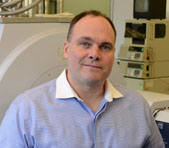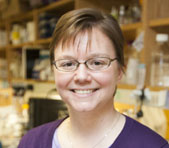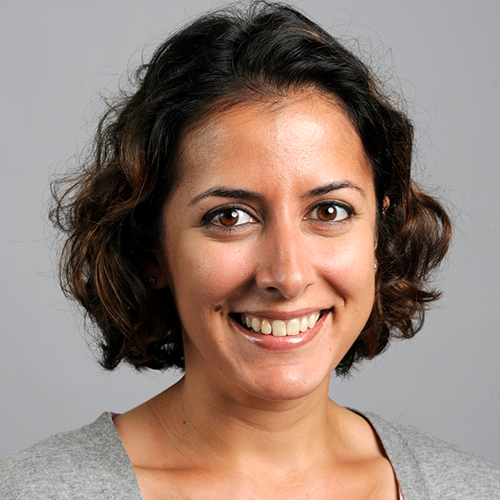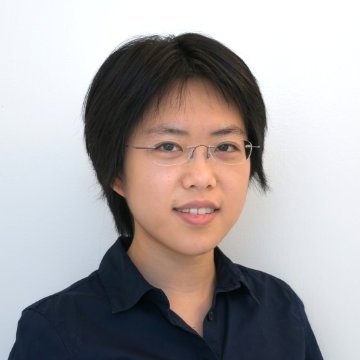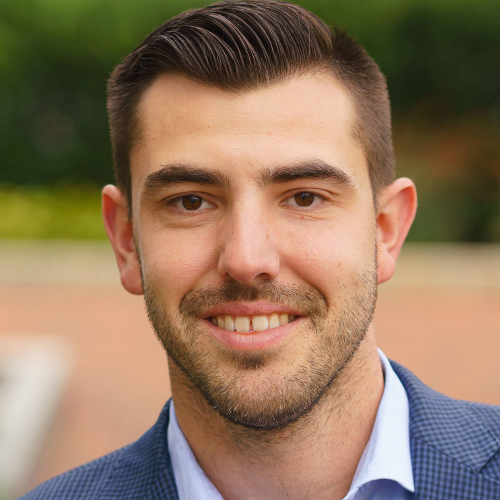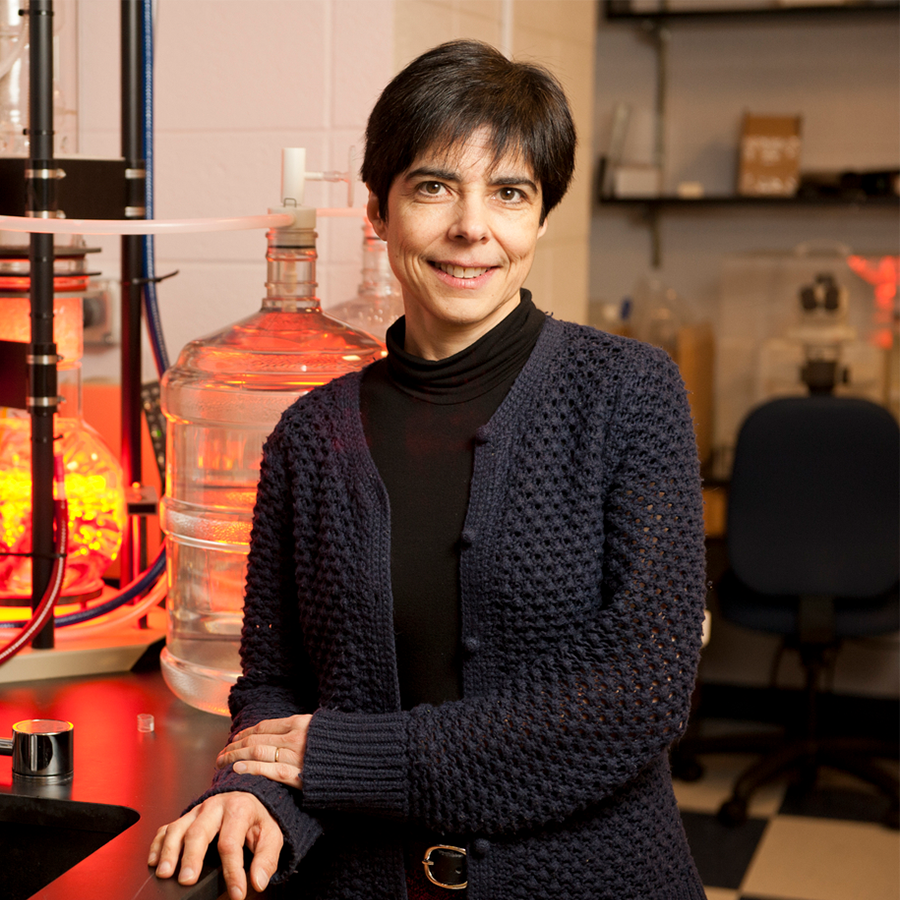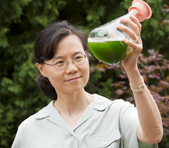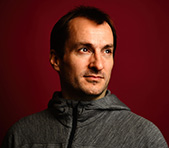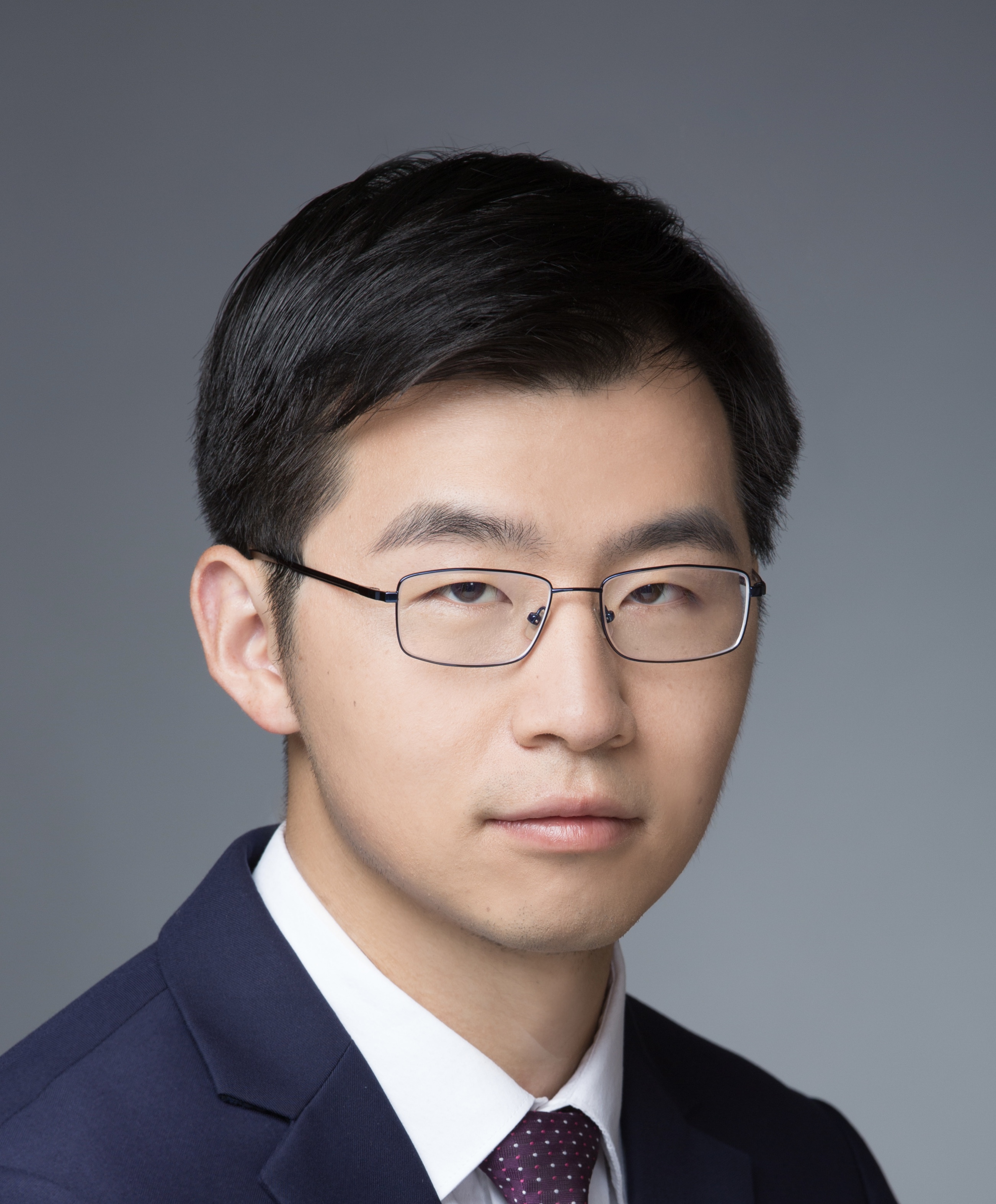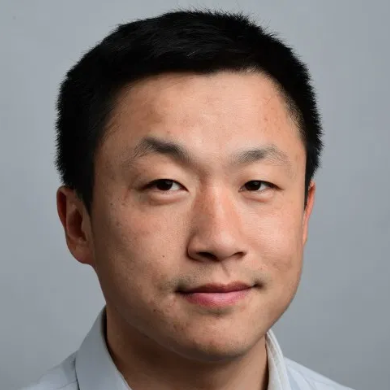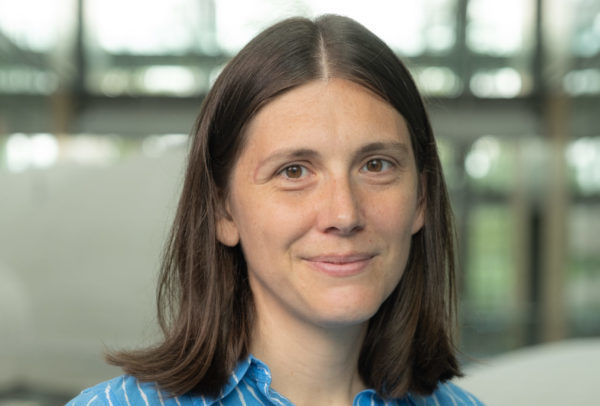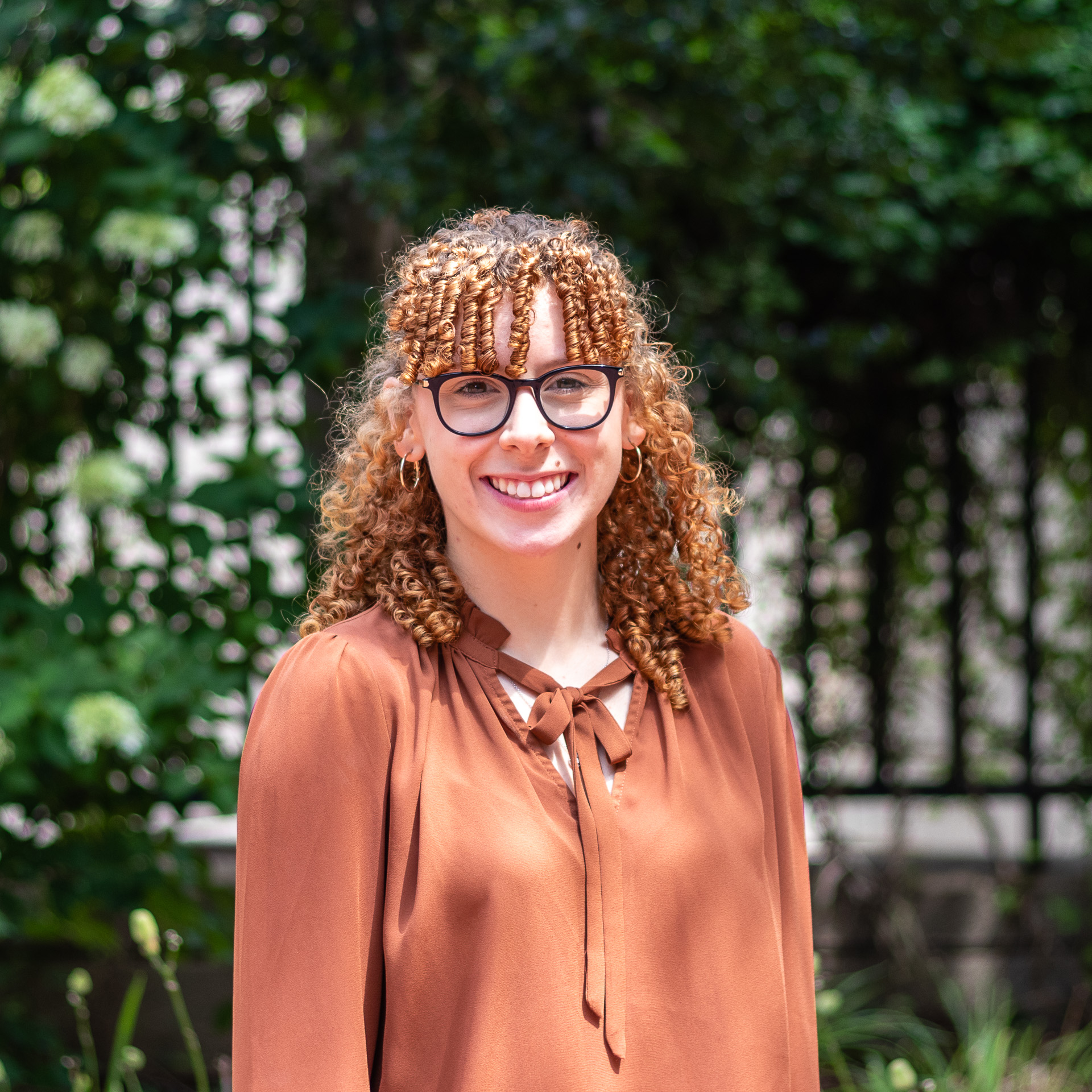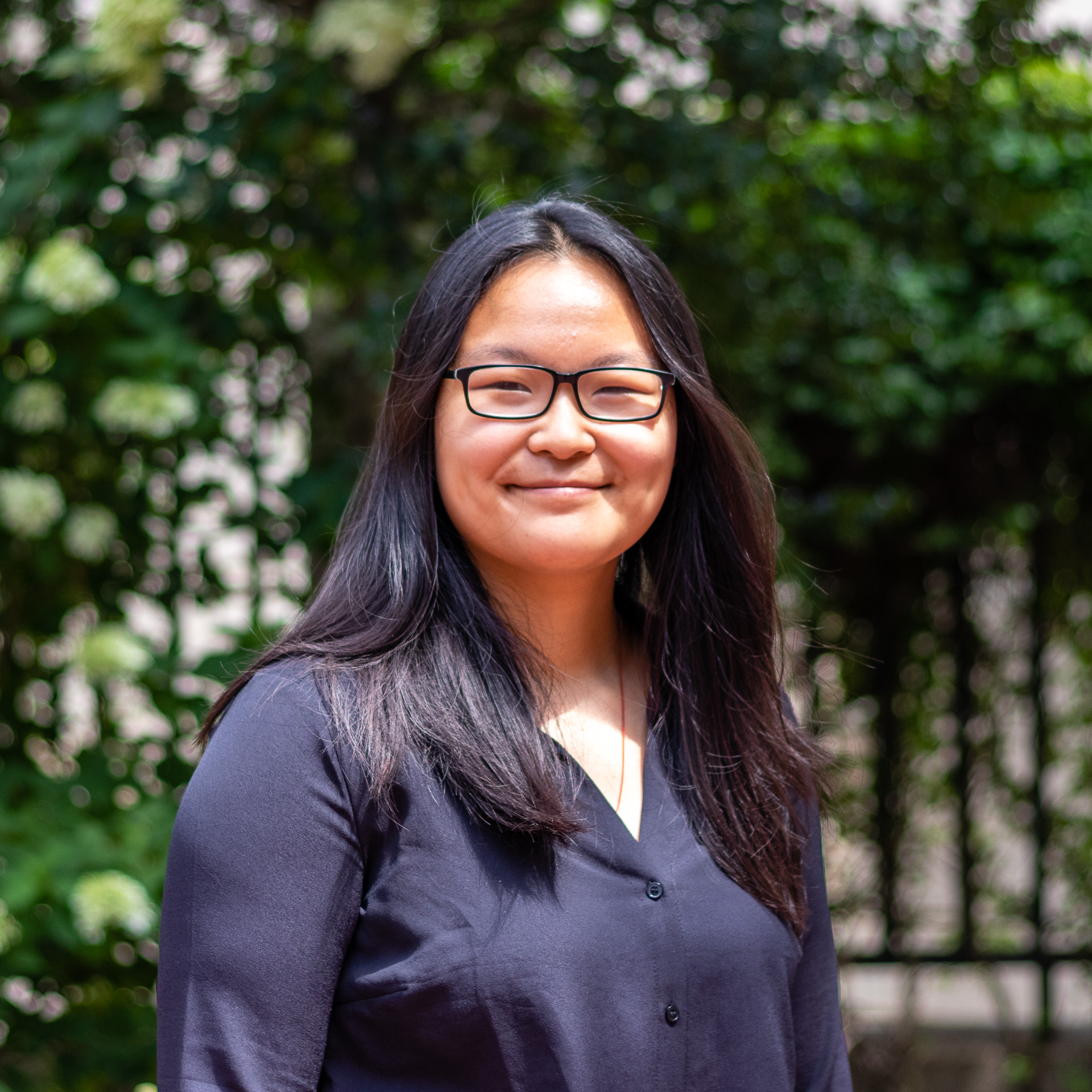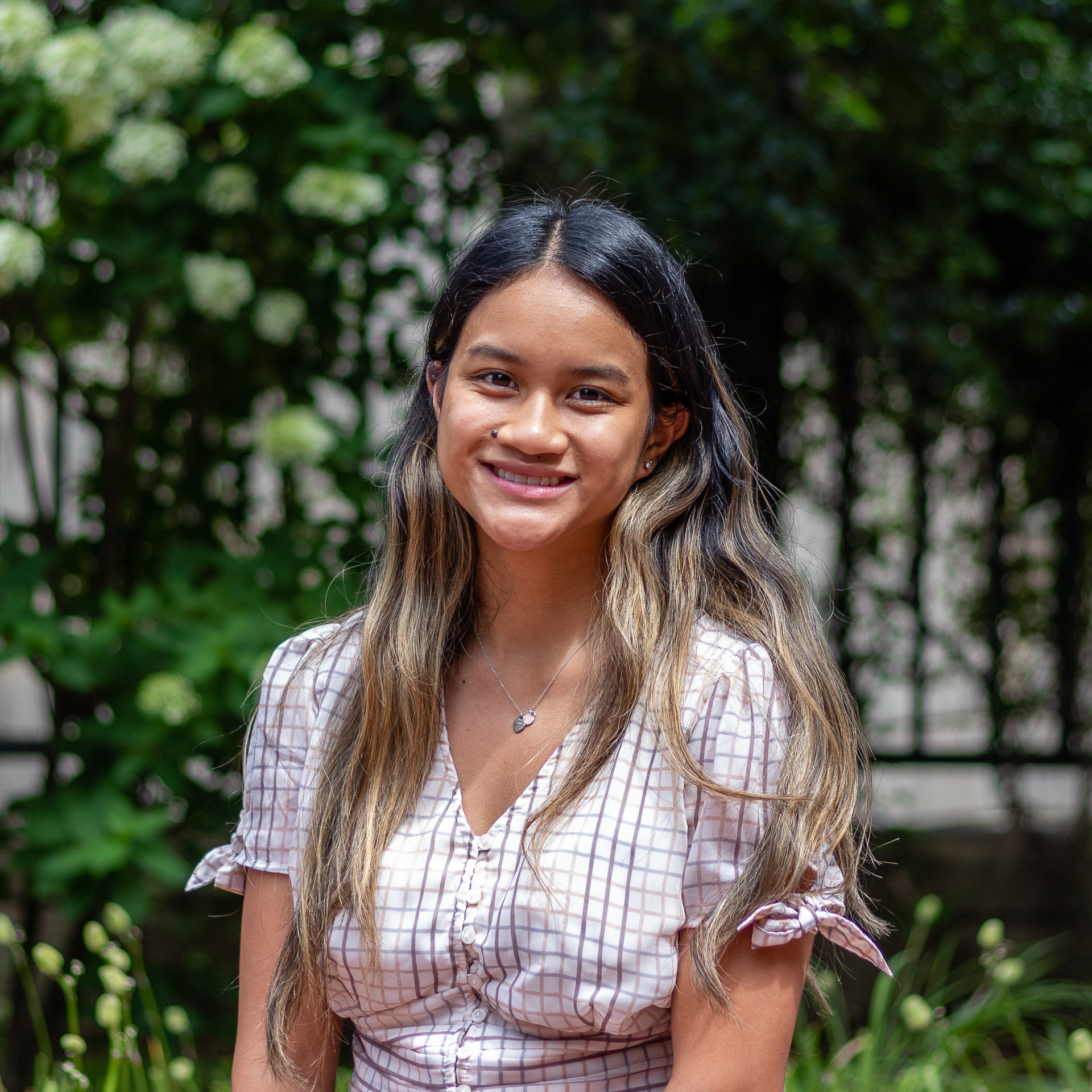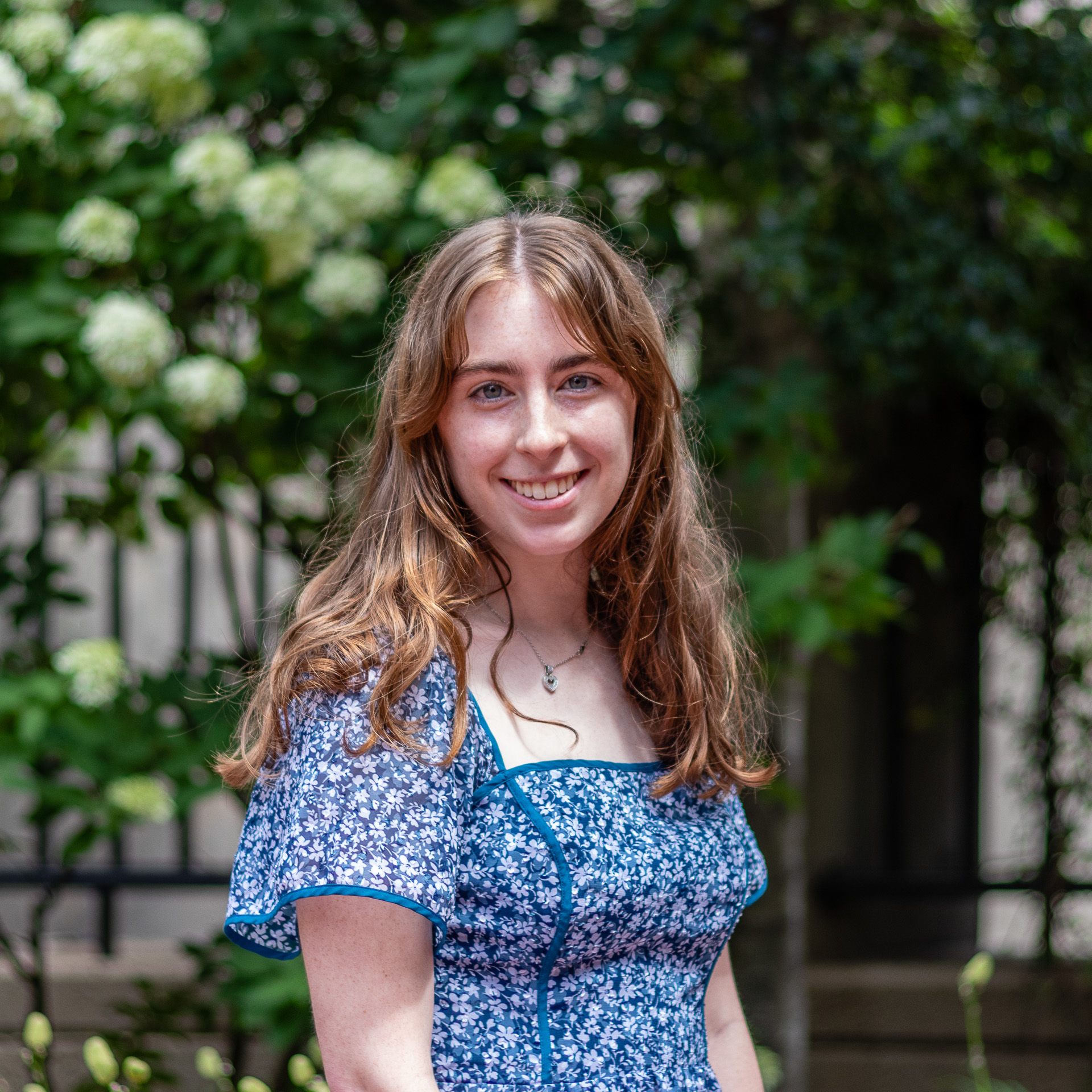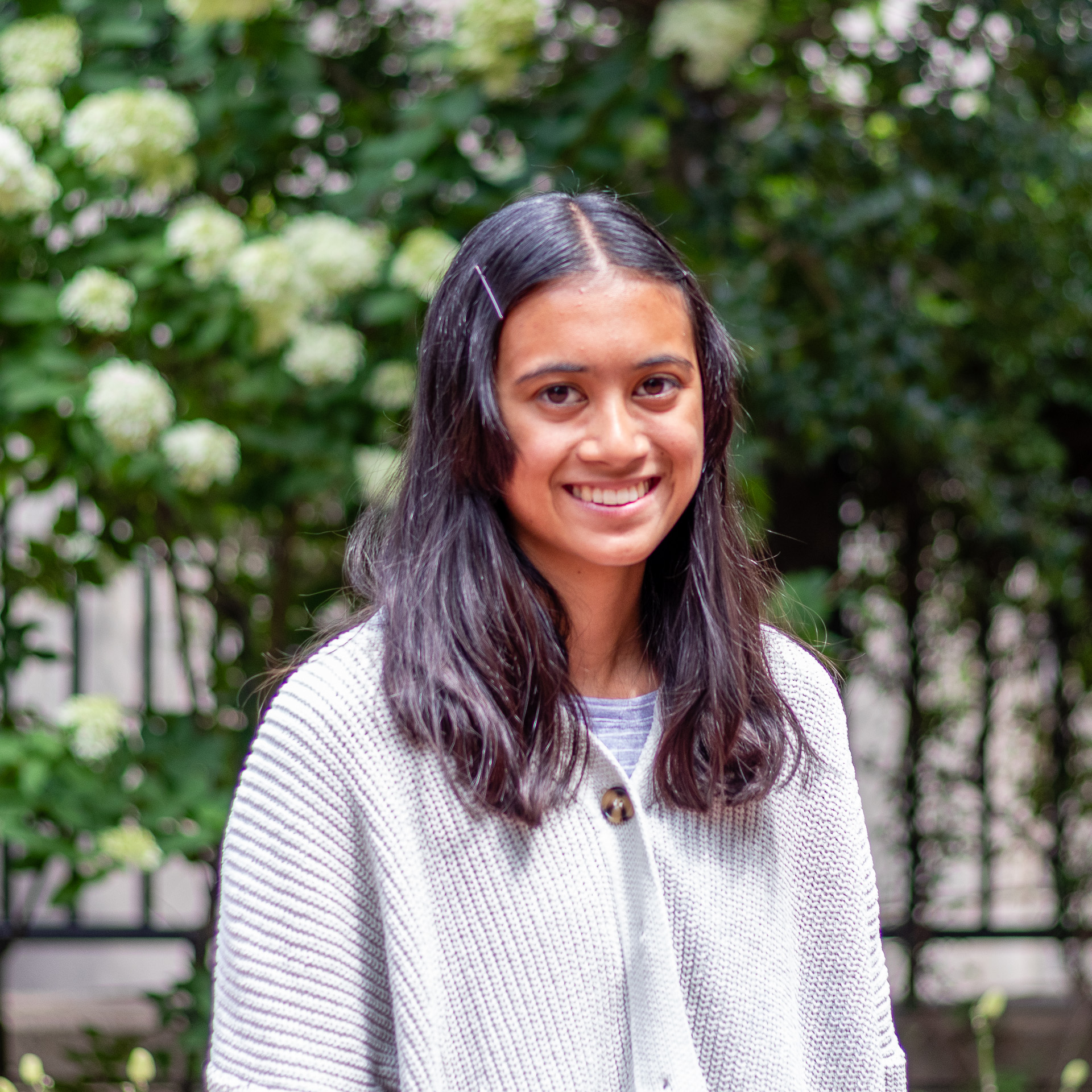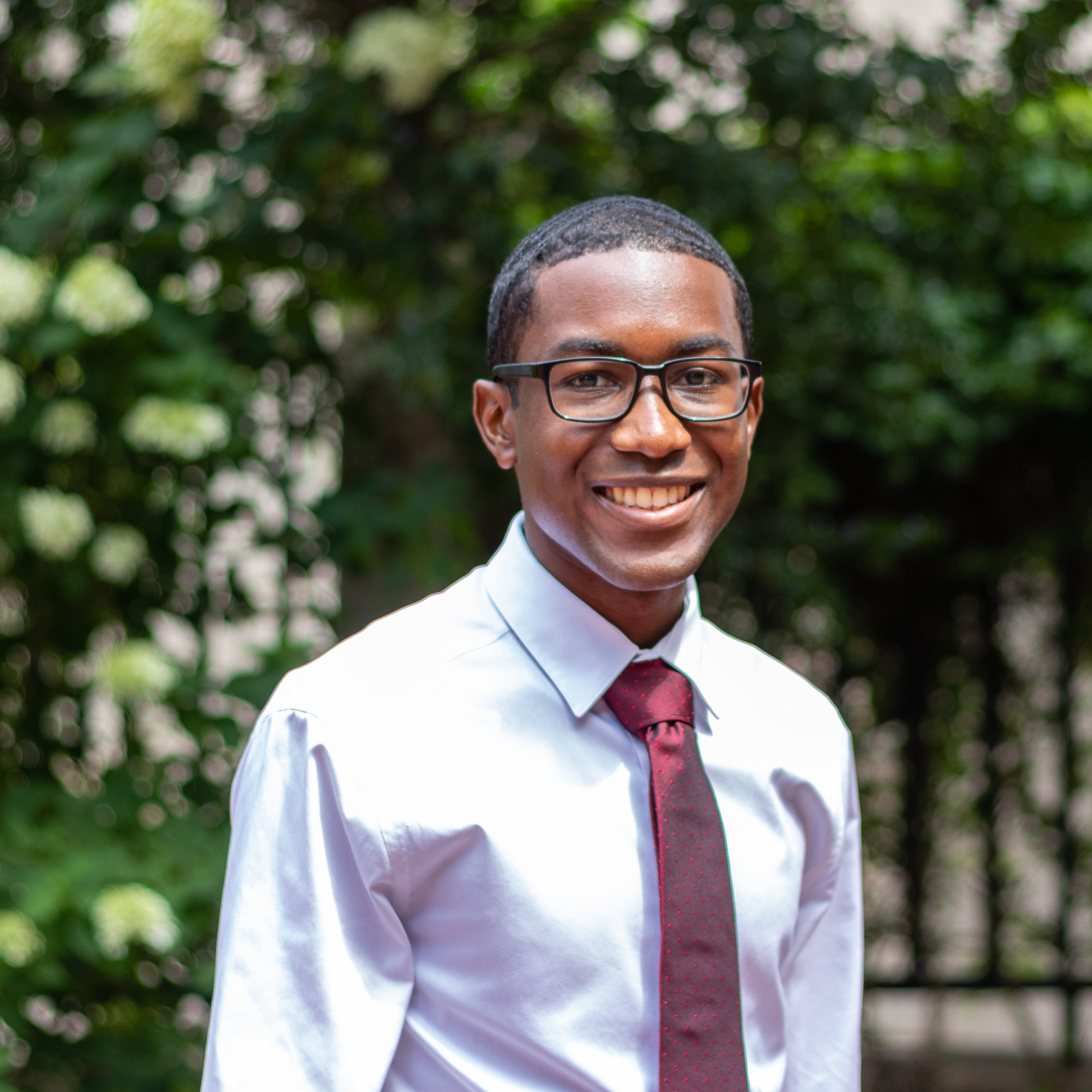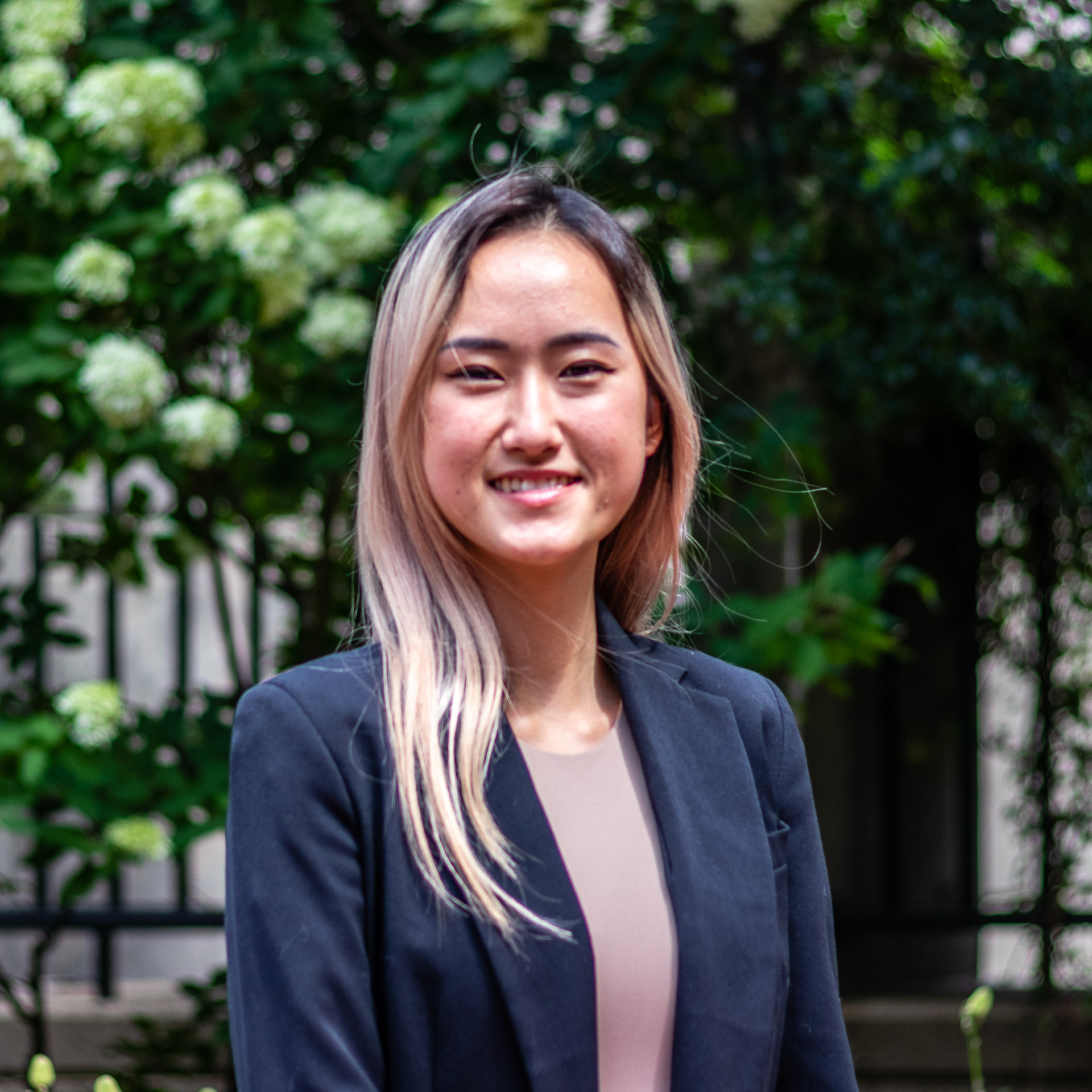Summer Research Experiences for Undergraduates Program at Northeastern
Focus on Chemistry
Spend the summer in the heart of Boston living with a small cohort of like-minded undergraduate students learning about and doing exciting research. Nine students will be selected to participate on interdisciplinary research teams for ten weeks, including weekends, from May 30–August 4, 2023.
This summer program immerses students in the world of research science, exposing them to various aspects of scientific investigation and careers via workshops, lectures, presentations and field trips. The program culminates in a research symposium, where students present their research.
The NSF-REU program in Northeastern’s Department of Chemistry and Chemical Biology offers interdisciplinary research opportunities in Biochemistry, Organic, Physical, Computational, and Analytical Chemistry laboratories with an overarching focus on the theme of Catalysis. The multidisciplinary research areas represented in the department and will provide opportunities for students in the program to experience and discuss catalysis across the spectrum, from small molecule catalysts to enzymes. This is an important unifying theme through which students can be engaged in understanding chemistry from various perspectives through cutting edge research.
This program is funded by National Science Foundation REU Site grant NSF CHE-1757078.
On This Page:
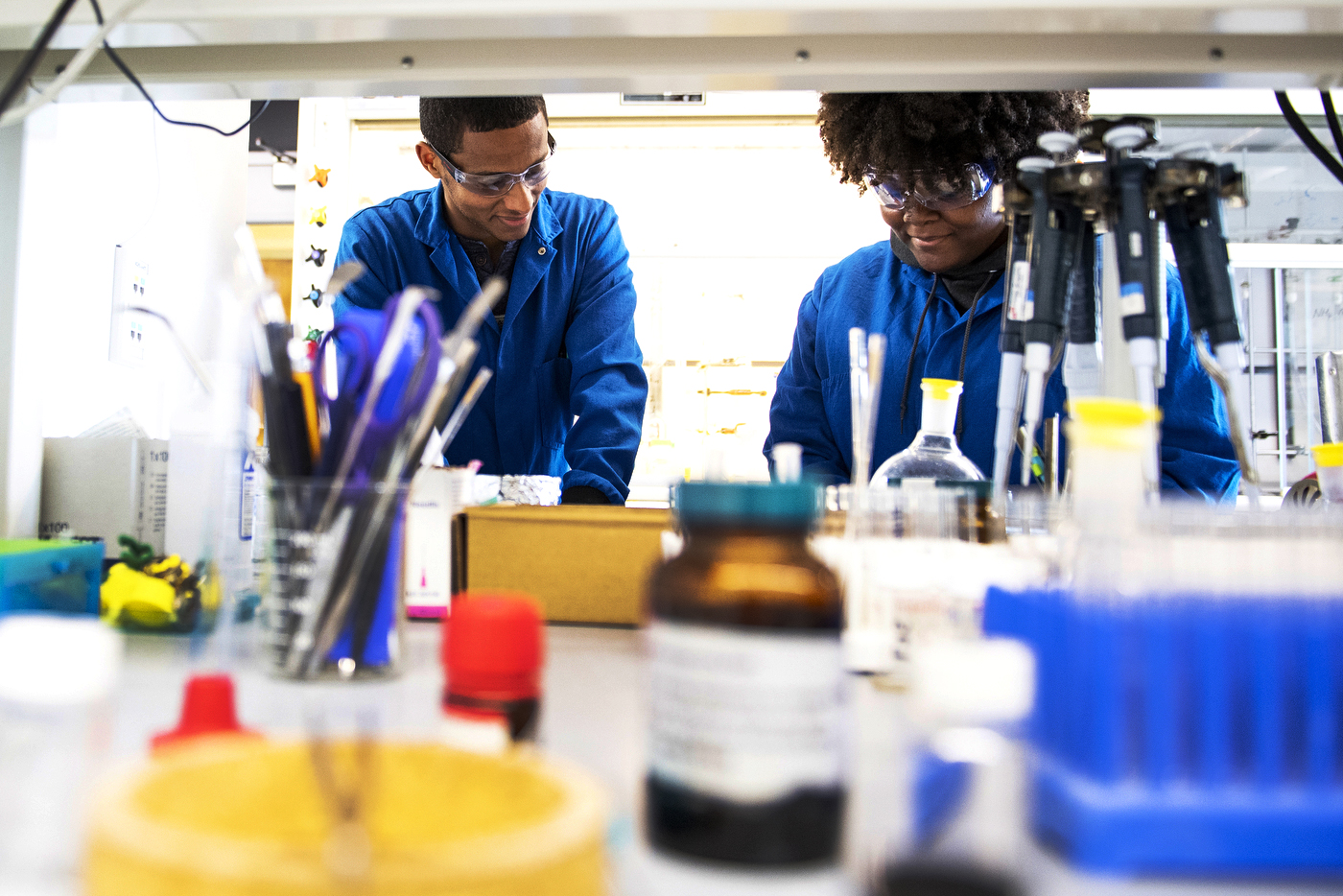

Essential Program Information/Apply
Students learn how research is conducted, and many will have the opportunity to present the results of their work at scientific conferences. Students will use techniques at the cutting edge of chemical research to answer new questions and will enhance their abilities to lead and perform in research teams.
REU students will be full participants in all usual lab activities including lab meetings. Mentoring and support will be provided throughout the experience to enable students to grow as independent scientists.
2023 Program Details
- 10-week schedule: May 30–August 4, 2023
- $5500 stipend
- Free on-campus housing and meal allowance
- Students are responsible for their travel expenses
- Full time commitment to research
- Professional development and research seminars, social activities, final research presentation
Am I Eligible?
Applicants must meet the following requirements:
- Undergraduate college students (rising sophomores through rising seniors, as of Summer of program year)
- US citizens or permanent residents only
- Students majoring in chemistry, biochemistry, or other related disciplines
- Strong interest in a career that involves scientific research
- Women, first-generation college students, and students from groups underrepresented in the sciences are encouraged to apply
- Preference will be given to students from institutions lacking doctoral research programs in chemistry
- Northeastern undergraduates are NOT eligible
How to Apply
Thank you for your interest in the REU program in the Department of Chemistry at Northeastern University. The deadline to submit your complete application is March 15, 2023.
Our application form will open on December 15, 2022.
Complete and submit your application on the NSF-ETAP website. The application consists of:
- The NSF registration form. Information entered in this form will be pulled into any other opportunities you apply for via NSF-ETAP.
- A personal statement where you tell us about your aspirations as a scientist and how participating in this summer program fits in with your academic and career goals. Please be sure to include your research interests.
- Unofficial transcripts
- Two letters of recommendation. You will need the names and contact information for two references. The references will receive an automated email from the application system with instructions to submit their letters of recommendation online.
- A statement of your post-graduate goals
- Ranked choice of at least three faculty members you would like to work with. Please note that we will prioritize only your top 3 choices.
Am I eligible?
To participate in the program, you must be a U.S. Citizen or permanent resident, a freshman, sophomore, or junior as of Spring 2023, and a major in chemistry or biochemistry or related disciplines. Students graduating in the 2023 calendar year are not eligible. Applicants must have health insurance coverage. Northeastern University undergraduate students are not eligible.
What are your selection criteria?
Preference will be given to students from institutions that do not have a research-intensive focus at the graduate level and to students with a strong interest in research and pursuing graduate studies in the sciences. Previous undergraduate research experience is not required.
When will I hear back about my application?
Applications will not be reviewed before the March 15 deadline. We expect to notify all applicants by April 7, 2023.
Can I bring a car?
We strongly advise against bringing a car with you. On-campus parking permits are expensive and street parking in Boston can be challenging. Boston has an excellent public transportation system (MBTA) that provides convenient access to much of the city.
Can I have a part-time job or take courses while participating in the REU program?
You may not hold any additional jobs or take courses for academic credit at Northeastern or any other institution, including online courses, during the 10-week period. The REU program is a full-time commitment and it is imperative to participate fully in the program.
Can I take time off during the program?
Participants may not go on vacation or take time off during the 10-week program. Northeastern University and the REU program will observe the Juneteeth holiday on June 19, 2023, and the Independence Day holiday on July 4, 2023.
Do I have to attend all events on the schedule?
Participants must attend all scheduled program events. Participants must inform the program director before making plans for unavoidable absences. Unexcused absences from scheduled events will result in termination from program. Weekend outings are optional but participants are encouraged to attend.
Will my travel expenses to and from Boston be covered?
Travel expenses will not be covered or reimbursed. Travel to a national conference to present results of research conducted as part of the REU program will be supported.
Is the start or end date flexible?
The program dates are from May 30–August 4, 2023. Important orientation and safety training meetings are scheduled during the first few days of the program and a student symposium is scheduled for the last day; therefore, only if an exceptional unforeseen situation occurs will the start or end dates be adjusted.
Where will I live?
We will provide free housing and a meal plan for the entire duration of the program. Summer housing is conveniently located within walking distance of the department. Participants will share rooms in apartment-style housing and will be provided a meal card that can be used in dining locations on campus for duration of the program.

Research Teams
REU students will be full participants in all usual lab activities including lab meetings. Mentoring and support will be provided throughout the experience to enable students to grow as independent scientists.
The Agar group characterizes changes to proteins, peptides, and lipids that occur during neurodegeneration, and then determines which of these changes have structural or toxic consequences. We then attempt to develop drugs that prevent these disease related changes.
The genomic integrity of living organisms is constantly under threat from DNA damage, which must be repaired or it can block normal cellular DNA replication. However, the Y family of specialized DNA polymerases has the remarkable ability to replicate damaged DNA templates, allowing cells to tolerate some DNA damage, albeit at a potential mutagenic cost. Y family DNA polymerases are conserved throughout all domains of life and exhibit some specificity for different types of DNA damage, although the basis for this specificity is not understood. They accomplish their remarkable activity using the same fundamental two-metal-ion chemical mechanism as other DNA polymerases. Our research aims to determine the range of damaged substrates bypassed as well as the inherent basis for specificity for different types of DNA damage. We take a comprehensive approach to understanding the molecular mechanisms by which Y family polymerases achieve specificity, using computational tools, synthetic chemistry, biochemistry, microbiology, and directed evolution protein engineering.
Role of REU site student: Role of undergraduate students: Students will assay site-directed polymerase variants and random libraries of polymerase variants for their ability to copy DNA containing different types of damage, both in vitro and in vivo, in order to probe the ability to catalyze reactions with a wide variety of substrates. Selected active and inactive variants will be characterized for their ability to bind DNA as well as other biophysical properties. The students involved in these projects will be exposed to fundamental concepts in protein and nucleic acid chemistry, directed evolution, biotechnology, molecular biology, and will learn genetic manipulations and microbiological techniques, as well as develop experience in chromatography, electrophoresis, fluorescence and UV-Vis spectroscopy.
The Booth laboratory focuses on drug development targeting serotonin (5-hydroxytryptamine, 5-HT) G protein-coupled receptors (GPCRs). In addition to structure-based design and synthesis of new chemical entities, laboratory drug discovery technology includes computational chemistry and molecular modeling, molecular pharmacology, fMRI brain imaging studies, as well as, cellular and preclinical rodent and primate animal models to assess efficacy of drug candidates for substance use disorder, autism spectrum disorder, inflammatory bowel disease, seizure disorders, anxiety disorders, and psychoses. For example, current NIH- and DOD-funded projects focus on development of serotonin GPCR-based drugs to treat opioid addiction and autism, and, collaborative studies with Pfizer involve development of serotonin-based pharmacotherapy for inflammatory bowel disease. In collaboration with Dr. Craig Ferris (Northeastern Depts. Psychology and Pharmaceutical Sciences), fMRI brain imaging studies are underway to identify brain regions associated with novel drug candidates’ effects to treat opioid addiction and withdrawal symptoms in monkeys.
The BDG works at the interface of bio-analytical chemistry, materials science, and design. The group investigates fundamental mechanisms behind systems in biology to better inform the design of new classes of protein-based biomaterials that may interface with or enhance the performance of humans. The key molecules and/or proteins involved in system processes are then incorporated into materials using customized manufacturing techniques. Current research projects focus on building catalytic sensors inspired by cephalopods and designing bionic protein materials for implantable electronics. Undergraduate researchers (10 total/3 years) have made substantial contributions to the BDG. In fact, the author list of one of their publications on inkjet printing biohybrid protein materials (Biointerphases, 2016 DOI: 10.1116/1.4966164) consists entirely of undergraduate authors. In a separate project on cephalopod pigmentation in the group, one undergraduate research was co-first author on two publications (Langmuir 2016, DOI: 10.1021/acs.langmuir.6b00243; J. of Visualized Experiments 2016, DOI: 10.3791/54803). Consequently, undergraduate student in this program will receive interdisciplinary training at the interface of engineering, materials, and analytical chemistry.
Role of REU site student: The participant will work within a team including 1 postdoc and 2 PhD students to better understand the composition-dependent function of the pigments on adaptive coloration in the animals and to understand how and why the pigment molecule contributes to electron transfer in the chromatophore and whether electron transfer catalyzes light absorption in response to an optical stimulus. This research will have significant impact on bio-inspired materials, camouflaging textiles and paints, optical displays, and flexible electronics by providing a fundamental understanding of the molecular contributions to the extraction of light in natural bio-photonic systems. This project will give the student experience in small molecule separations, compound purification (e.g., TLC, HPLC), and compound characterization (e.g., 1H and 13C NMR, IR, MS, optical rotation).
The overarching goal of this research is to understand the unique advantages of enzymes in controlling chemical reactions and to utilize this understanding to design non-biological catalysts for applications in biomedicine and sustainability. This research is interdisciplinary and combines our group’s expertise in quantum chemistry, statistical mechanics, multiscale simulations, machine learning, protein dynamics, materials modeling, inorganic chemistry, and catalysis. Undergraduate students will be exposed to a range of methods spanning different areas of computational physical chemistry and learn how these methods can be combined to study complex chemical systems.
Role of REU site students: The REU students will receive interdisciplinary training in chemistry. They will gain experience using physical chemistry and a variety of computational methods to address research questions in catalysis.
My group works at the interface of synthetic biology and materials science in order to program microbes to make materials. Microbes have already been used for centuries as cellular factories for the production of various drugs, food products, and commodity chemicals. Our goal is to use modern tools for genetic engineering to use microbes as fabrication plants – able to not only produce soluble components, but cooperatively orchestrate their assembly into higher order structures. Some of our work focuses on the basic development of the cellular, genetic, and biomolecule-based platforms that make this possible. More application-oriented projects in the lab work toward deploying these engineered cellular systems as therapeutics (especially in the gut), in manufacturing (e.g. bioplastics), and for bioremediation and resource extraction (e.g. water purification).
Students who join the lab can expect to be trained in basic microbial genetic engineering techniques, and protein and materials characterization. REU students usually work closely with a graduate student or postdoctoral mentor on an existing project offshoot related to one of these areas, often geared toward new proof-of-concept experiments.
Do you want your summer research to have a real-world impact? Do you want to discover new materials to offset climate change with solar panels or chemotherapy-alternative cancer drugs? You can work in either of these exciting areas without ever having to put on a lab coat or goggles in our computational group in the Interdisciplinary Science and Engineering Center! The Lopez group uses computational and machine learning techniques for chemical discoveries. We collaborate with other Northeastern University research groups to test our predictions. We’re motivated by identifying new green reactions, figuring out how they work, and identifying photomedicine targets. No computational experience is needed to join our group and undergraduates have been successful by publishing first-author papers (DOI: 10.1021/acs.jpclett.9b02577 ; DOI: 10.1039/C8PP00095F), presenting at national conferences, and graduating to top Ph.D. programs (University of Michigan and others).
Role of REU site students:
Students will first learn to use software to visualize starting materials, intermediates, and products in an assigned photochemical reaction. They will learn introductory level bash and python scripting and apply these skills to submit density functional theory calculations to our high-performance computing resources. Students will become proficient in understanding how computed potential energy surfaces relate to the experimentally determined reaction outcomes. As such, they will describe their results to a collaborating experimental group on a weekly basis. Students will be expected to discuss the project objectives and current results every two weeks at our group meeting.
In the Manetsch laboratory, undergraduate researchers (20 total/12 years/1 NSF-REU) are engaged in medicinal chemistry projects focusing on antimalarials, antileishmanials, or antibacterial agents. Commonly, undergraduate students contribute to compound preparation and purification. The specific goal of this medicinal chemistry research program is the development of selective N2,N4-disubstituted quinazoline-2,4-diamines displaying potent antibacterial or antileishmanial activity. Undergraduate students utilize a palladium-catalyzed amination of aryl halides to substitute the quinazoline scaffold with appropriate substituents. Therefore, undergraduate students in this program will obtain training at the interface of organic synthesis, medicinal chemistry, and infectious diseases.
Role of REU site student: The participant will be exposed to modern laboratory techniques to prepare and characterize N2,N4-disubstituted quinazoline-2,4-diamines, which will be sent to collaborating laboratories to be tested for antibacterial (Prof. Lindsey N. Shaw at the University of South Florida) and antileishmanial activity (Prof. Dennis E. Kyle at the University of Georgia, Athens). Furthermore, the participant will conduct HPLC-based assays to experimentally determine physicochemical properties such as aqueous solubility and logD at different pH values. This research will provide the participant a platform to learn and master basic techniques associated with synthetic chemistry (TLC, flash column chromatography, preparative HPLC, compound characterization by IR, 1H- and 13C-NMR, and mass spectrometry) as well analytical chemistry (sample preparation, analytical HPLC with compound detection by a diode array detector and/or mass single quadrupole detector).
Ras and related GTPases – structure, biochemistry and function: The superfamily of GTPases represents a class of nature’s signaling catalysts, which include five distinct subfamilies: Ras, Rho, Ran, Rab and Arf. These proteins function as switches that collectively touch on virtually all aspects of cellular function. The Mattos Lab discovered an allosteric switch mechanism where binding of calcium acetate at an allosteric site on the membrane-interacting surface of Harvey-Ras (H-Ras) promotes a shift in Helix3/Loop7 that enables an extensive water-mediated network of H-bonding interactions resulting in complete ordering of the active site. We have linked the allosteric switch mechanism with signaling through the effector Raf Kinase and most recently discovered that Ras dimerization is promoted in the presence of Raf and membrane phospholipid head-group mimics. We are currently testing the effect of dimerization on catalysis of GTP to GDP on Ras in the absence of regulator proteins. We are also studying allosteric modulation in Rho and Arf for a comparison of effects on the GTP hydrolysis reaction across the Ras superfamily. For this we use mutations to perturb the allosteric switch mechanism. We combine kinetic experiments with X-ray crystallography, SAXS and MD simulations of the wild type and mutant proteins to obtain a mechanistic view of how Ras superfamily members function at the molecular level.
Role of REU site student: The summer REU students will use PCR to make mutations in Ras, Rho or Arf. They will then express the mutant protein in E. coli and use ion exchange and gel filtration chromatography to purify their mutant. These mutants normally crystallize easily in conditions similar to those used for obtaining wild type crystals and therefore the students will have an opportunity to solve their structures. Students will be exposed to basic biochemistry techniques in the laboratory, X-ray data collection and processing, and will learn first-hand how the active site of an enzyme promotes catalysis.
Students participating under this REU program will be immersed in various aspects of electrochemical material science and fundamental aspects of structure property relationships. Students will participate in various ongoing projects funded by the US DOE and US DOD. One of these relates to electrocatalysis of hydrogen evolution/oxidation under the aegis of US DOE HydroGen initiative. Overall goal is to enable sustainable hydrogen generators using renewable energy allowing for deployment of fuel cell powered vehicles as the ultimate solution to electrification of our transportation system. Students will also participate in our efforts to develop novel alternatives to noble metal catalysis for oxygen reduction funded under the aegis of the US DOE initiative called ElectroCat. Both these projects entail a broad swath of activities including computation of electrocatalytic pathways, in situ and operando spectroscopy using synchrotron light source, electrochemical measurements under static and dynamic conditions and actual device testing. Also available are fundamental science initiatives related to (a) plasmonic enhancement of electrocatalysis. Here advanced laser spectroscopy and newly funded tip enhanced Raman Spectroscopy is harnessed to understand processes related to charge injection and its effect on electrocatalysis, (b) advancing the limits of electrochemical detection via nano-confinement of ion channels. We are pushing the boundaries of such detection in bio-medical domain for enabling inexpensive field deployable sensors.
Summer REU student will participate in chemical synthesis of electrocatalysts, spectroscopic measurement of electrochemical charge transfer, device assembly and testing.
The goal of this combined synthetic/medicinal chemistry research program is the development of new asymmetric synthetic methodologies for the synthesis and biomedical evaluations of molecules with antimicrobial and anticancer properties. Undergraduate researchers (80 total/20 years/7 NSF-REU) have made substantial contributions to every aspect of these investigations, from our first to our latest synthetic studies (J. Org. Chem. 1999, 64, 2982-2983; Org. Lett. 2016, 18, 4970–4973), as well as one of our most recent biomedical studies (ACS Med. Chem. Lett. 2015, 16, 95–99.). To date we have developed a strong synthetic background in the use of asymmetric catalysis for the synthesis of stereochemically complex and biologically active natural and unnatural molecules, which are evaluated (in house) for their anticancer and antimicrobial activities. Consequently, undergraduate students in this program will receive interdisciplinary training at the interface of synthesis, medicinal chemistry and microbiology.
Role of REU site students: The participants will develop a new route to a novel structural motif (e.g., a rare sugar), within the larger goal of exploring the structure-activity relationship of a biologically important natural product. This project will give the students the opportunity to hone skills and master techniques associated with complex molecule synthesis and biological evaluation, such as manipulation of air-sensitive reactions, compound purification (e.g., TLC, HPLC, and flash chromatography), compound characterization (e.g., 1H and 13C NMR, IR, MS, optical rotation), and cell-line assays (e.g., MTT, apoptosis, antibacterial activity).
This project examines the role of distal residues and electrostatic properties in enzyme catalysis, with an emphasis on how they need to be considered in enzyme design and protein engineering. We have developed and verified computational methods that, given the 3D structure of a protein, predict the residues that are involved in catalysis and ligand binding. While most biochemical studies of enzyme mechanisms focus on the residues in direct contact with the substrate molecule or ligand (“first-shell” residues), there have also been reports by others and by us (Brodkin, H.R., N.A. DeLateur, S. Somarowthu, C.L. Mills, W.R. Novak, P.J. Beuning, D. Ringe, and M.J. Ondrechen, Prediction of Distal Residue Participation in Enzyme Catalysis. Protein Sci. 2015. 24: p. 762-778) of significant participation in catalysis by residues outside the first shell, but these effects are poorly understood. As we uncover details of how nature builds protein catalysts, we establish best practices for enzyme design. The long-term goal is to design enzymes to catalyze industrial chemical reactions with less energy consumption and fewer unwanted by-products than conventional catalysis. The aims of this project are to: 1) Study the couplings between residues that promote enzyme activity using both computational (electrostatic and dynamic) and experimental (site-directed mutagenesis, kinetics assays, and x-ray solution scattering) approaches; 2) Develop theoretical approaches to manipulate enzyme activity in natural and designed enzymes; 3) Use Y-family DNA polymerases and designed retroaldolase enzymes as prototype examples for computational analysis, development, and experimental testing of novel enzyme design principles.
Role of REU site students: Undergraduate students will participate in computational studies of the residues in and near the active site of natural and designed enzymes. Working with a PhD student mentor, they will seek patterns in the computed chemical and electrostatic properties and their relationship to the catalytic properties. REU students will also work on the computational design of enzymes, using predictors of fold stability, docking of substrate molecules, protein electrostatics, and other computational tools. They will also have the option of expressing and purifying protein sequences and testing for catalytic activity.
Plants are a rich source of valuable medicines; in fact, 25 – 50% of all prescription drugs used in the U.S. are extracted from plants or are based on chemical structures originating from plants. However, because of the slow growth rates or low product concentrations found in plants, an alternative route for supplying these critical drugs is necessary. Our group investigates the biosynthesis of plant-derived drugs using cell and root cultures. Plant cell and tissue cultures can be and have been used to supply important drugs, potentially at higher rates and concentrations than that found in whole plants and irrespective of the weather or season.
The overall vision of our research is to enhance the production of critical plant-derived pharmaceutical compounds through plant cell and tissue cultures, specifically using the production of alkaloids from cultures of Catharanthus roseus (commonly known as the Madagascar periwinkle plant) as a model system. The C. roseus plant produces several highly-valued pharmaceuticals, including the anti-cancer drugs vincristine and vinblastine. The high cost ($4 – 20 million/kg) and need for these anti-cancer compounds motivate our research to better understand their biosynthesis and ultimately overproduce these valuable alkaloids economically using cultures of C. roseus. In this project, we will investigate the enzymatic bottlenecks to alkaloid production and develop transgenic root cultures to explore the expression and localization of these enzymatic bottlenecks within the root. The results from this project will guide our genetic engineering efforts for enhancing the catalytic flux towards our desired alkaloids.
Role of the REU site student:The participant will work closely with a PhD researcher to evaluate the effect of strategies (i.e. engineering the expression of specific transcriptional regulators) on growth and on alkaloid production from transgenic cultures. These transcription factors play a role in both growth and alkaloid biosynthesis. The participant will verify the integration of the transgene into the plant genome through molecular biology methods, clone constructs used for genetic engineering, evaluate growth effects using a non-invasive method to monitor growth and a mathematical model to calculate growth rate, and analyze the alkaloid content of the cultures through HPLC-UV absorbance. The goal of the project is to determine the role of the transcription factor on growth and alkaloid production
The goal of this project is to apply a combination of cheminformatics, molecular modeling, and medicinal chemistry design, coupled with preparative organic synthesis, to understand structure-activity relationships of classes of compounds that interact with essential kinases (nature’s signaling catalysts) of trypanosomatid parasites (such as Trypanosoma brucei, T. cruzi, and Leishmania spp.). The biological assessment of these compounds is performed in collaborator laboratories at the University of Georgia (Prof. Kojo Mensa-Wilmot) and at the Walter Reed Army Institute for Research (Dr. Richard Sciotti). Our laboratory has implemented a strong design, synthesis, and purification infrastructure that employs state-of-the-art high-throughput technologies, and we have implemented informatics-intensive approaches for molecular design.
Role of REU site students: The REU students will receive interdisciplinary training across chemistry, medicinal chemistry, separations and analytical science, computational chemistry and cheminformatics, and parasitology. Specifically, they will participate in organic synthesis, cheminformatics data analysis, molecular modeling, and medicinal chemistry design.
Microplastics, plastic particles smaller than 5 mm in size, are now found in nearly all natural waters, from drinking water to rivers, lakes and streams, and the oceans. An estimated 8 million tonnes of plastic waste enters the oceans each year, yet only a fraction of this material can be found at sea. One hypothesis for the “missing plastics” is that exposure to sunlight dissolves them. You will test whether sunlight-driven photochemistry releases dissolved organic carbon (DOC) from plastics, essentially removing the plastics from the water. We are also testing whether the chemicals released as plastics and sunlight interact affect bacterial growth and health in natural waters. Results will improve basic understanding of the fate of plastics in natural waters, the impacts of microplastics upon microorganisms, and inform decisions about how to prioritize plastic waste management.
Role of REU site students: The REU students will receive interdisciplinary training across analytical chemistry, photochemistry, and environmental chemistry. Specifically, they will conduct photochemical experiments with plastics. The students will then analyze the plastics to quantify plastic photo-oxidation via Fourier transform infrared spectroscopy and the rate at which plastics dissolve under sunlight by measuring dissolved organic carbon production and plastic carbon loss.
Identification and quantification of small molecule organic pollutants. Tian lab focuses on the identification and quantification of known and unknown contaminants in our environment, to assess their risks to human health and the ecosystem. Since hundreds of thousands of synthetic chemicals are used in our daily life, many of them go into the water, soil, air, and biota. To understand what are the harmful chemicals we are exposed to, we use high-resolution mass spectrometry (HRMS) and cheminformatics to perform non-target analysis (NTA). Coupling NTA with bioassays and chromatography, we will assess the risk of contaminants, and pinpoint the causal pollutants for observed toxicities.
Analysis and risk assessment of micro/nano plastics. We will also use analytical chemistry to explore the impact and environmental behavior of micro/nano plastics, which are produced every day all over the world. More than just polymers, plastics fragment and degrade in the environment, release chemical additives and transformation products. We hope to use analytical and bioanalytical tools to characterize such processes and understand the chemical nature of the degradation products.
The overarching themes of this research include polymer chemistry, materials science, and bio-nanotechnology, all of which are underpinned by organic chemistry. Using a range of polymerization catalysts, colloidal syntheses, and bioconjugation techniques, we explore the interface of chemistry with biology and materials science by creating functional and hierarchical nanostructures from relatively simple starting materials. Specifically, we will address the challenge: is it possible, through the use of careful DNA modification and polymer design, to create novel entities that provide oligonucleotides with steric selectivity, such that protein access to the nucleic acid is hindered but hybridization is unaffected? An important component of this research is the synthesis of well-defined polymeric brushes of low polydispersity, precise length and placement of functional groups, and controlled density, using Cu-catalyzed atom transfer radical polymerization reactions and Ru-catalyzed ring-opening metathesis polymerizations. The design and synthesis of these polymers will be guided by established methodologies, and will allow undergraduate students to understand the basics of polymerization reactions, hone their experimental skills, and challenge their problem-solving abilities. In addition to gaining experience in polymer syntheses, undergraduate students will also be exposed to interdisciplinary science including nanotechnology and biosciences.
Role of REU site student: All REU students will receive training in polymer chemistry, which will include the development of the skills required for polymer synthesis, purification, and analysis using advanced tools such as GPC, MALDI-TOF, and TEM. In addition, based on their interest, REU students will gain hands-on experience in bioconjugation techniques, nucleic acid synthesis, cell culture, and/or biological assays such as western blot, gel electrophoresis, qPRC, ELISA, and MTT toxicity assay.
Proteins play pivotal and diverse roles in biological regulation and disease development. Many of their functions are modulated by chemical modifications. Modulation (e.g., via chemo-enzymatic specific functionalization) and characterization of these processes will greatly facilitate the understanding of fundamental mechanisms in biology and the discovery of new biomarkers for disease diagnosis. We are devising new protein chemistry, which catalyze reactions that are specific for particular types of modified amino acids to permit selective affinity labeling and mass tagging. Different from typical organic catalyst, our protein chemistry has to be conducted in aqueous medium and under mild conditions. Nevertheless, we first formulate new ideas by critically examining the conditions of traditional organic reactions. Then, we optimize suitable transformations by investigating reaction mechanisms using physical organic approaches. Finally, we validate our methodologies by analyzing biological samples with protein mass spectrometry and other proteomic techniques.
Role of REU site students: Undergraduate students will participate in all aspects of this project. Given the interdisciplinary nature of our research, students will learn a broad spectrum of techniques in analytical, organic, and protein chemistry as well as biochemistry, such as liquid chromatography, protein mass spectrometry, organic synthesis, affinity purification, protein expression, and enzymatic assays.
Photocatalysis harnesses the energy of light to drive chemical reactions with a high level of selectivity. We employ electronic absorption (UV-vis), emission, and time-resolved spectroscopy, as well as electrochemistry to uncover the mechanisms of photochemistry. Photochemical mechanisms inform the design of new photocatalysts for improved efficiency. Variation of ligands and metal centers in photocatalysts can enhance their efficiency, increase the quantity of light absorbed, and lower the cost of light-activated chemistry.
Role of REU site students: Students will synthesize and characterize supramolecular photocatalysts and investigate their ability to catalyze various reactions. The students working on these projects will become familiar with photochemistry and inorganic synthesis. They will develop skills with electronic absorption spectroscopy, steady-state and time-resolved emission spectroscopy, and cyclic voltammetry.
REU Alumni: Summer 2022
Sample Schedule of Activities
Week 1
- Welcome and orientation
- Introduction to labs/lab safety training
- Seminar on catalysis
- Tours
- Weekend outing
Week 2
- Faculty member seminar
- Ethics in research
- Weekend outing
Week 3
- Faculty member seminar
- Information literacy and literature searching
- Weekend outing
Week 4
- Faculty member seminar
- Graduate school and the application process
- Company outing
- Weekend outing
Week 5
- Faculty member seminar
- Preview of final presentations
- Weekend outing
Week 6
- Faculty member seminar
- Resume writing and review
- Weekend outing
- Annual department barbeque
Week 7
- Faculty member seminar
- Guest speaker
- Company outing
- Weekend outing
Week 8
- Faculty member seminar
- Effective research seminars
- Weekend outing
Week 9
- Faculty member seminar
- Guest speaker
- Weekend outing
Week 10
- Faculty member seminar
- Student research symposium
- Weekend outing
